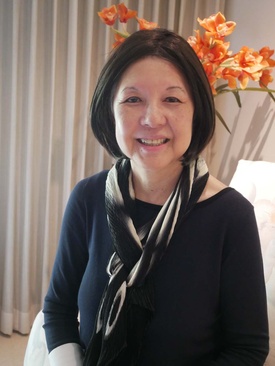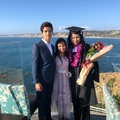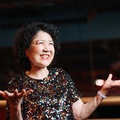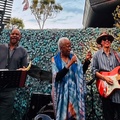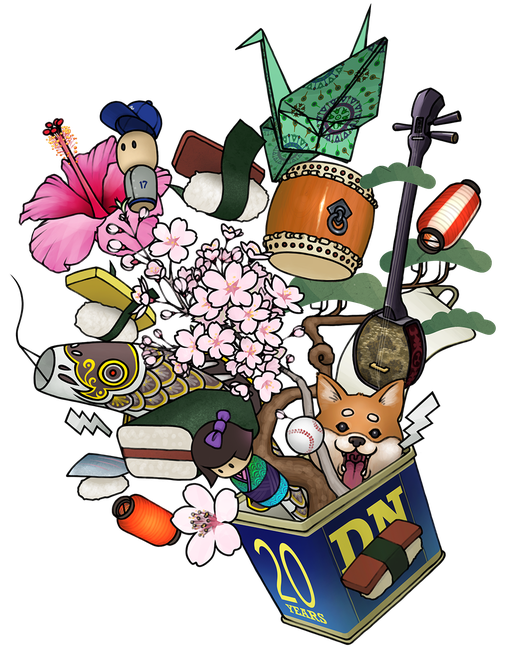“It will be too late if I don’t start now”
Irene Hirano Inouye was the President and CEO of the Japanese American National Museum (JANM) at the time of its founding and served in that role for 20 years. In 2009, she established the U.S. Japan Council (USJC) whose purpose was to strengthen relations between the United States and Japan. Last year marked the 10th anniversary of the USJC. During this milestone, I had the fortune of conducting an in-person interview with Irene in Los Angeles last fall. Prior to doing my research for the interview, I had heard about the USJC, but did not know the details of what the organization actually did and was also in the dark as to why Irene decided to create the USJC. I had thought that the organization was for a specific portion of Japanese Americans and that it had nothing to do with Japan-born Japanese like myself.
As Irene had talked about on various occasions before, she reflected on the many things that she learned during her 20 years at JANM. Born in Long Beach, Irene was a Sansei. Her mother was born in Japan, so Irene always had amicable sentiments towards Japan and the Japanese people. However, through her interactions with various people during her time at JANM, she learned that not all Japanese Americans shared this same sentiment. She was surprised at how many Japanese Americans there were who did not know which part of Japan their ancestors came from, the reason why they came to the U.S., or how they were related. In that sense, JANM served the important role of telling Japanese Americans about their roots, the history of hardships and successes that their ancestors experienced in the United States, as well as to inform non-Japanese Americans who Japanese Americans were. While head of JANM, Irene married Senator Daniel Inouye and decided to resigned from her position at JANM. She felt that it was time to entrust the museum to the next generation of leaders and was also finding it difficult to travel back and forth between Washington D.C. and Los Angeles. Afterwards, she founded the USJC in Washington D.C.
Irene told me that her motivation for creating the USJC was that she felt that “if Japanese Americans did not work towards strengthening U.S.-Japan relations now, it will be too late”. Thus, to foster a connection between Japanese Americans and the country of their heritage, the USJC promoted people-to-people exchanges and developed leadership training programs to facilitate these exchanges in both the United States and Japan. Over the last 10 years, Irene was proud to say that the USJC had brought more than 500 leaders together with roughly 200 of them being young leaders. One of these programs was the “Emerging Leaders Program” which was launched during the founding of the USJC. The program selected Japanese Americans between the age of 25 and 35 who were actively engaged in their local communities and were interested in U.S.-Japan relations to attend educational seminars provided by the USJC. These seminars also served as a networking opportunity for those selected.
A Clear Vision and Collaboration
Even though it was beyond my role as the interviewer, as I heard more about how hard Irene was working to get Japanese Americans involved in U.S.-Japan relations, my initial thoughts that the USJC was only for Japanese Americans and that it had nothing to do with a Japan-born Japanese like me began to change. I was deeply drawn to her story and empathized with her. I had met and talked to many Japanese Americans both publicly and privately. However, I never thought that there was a person who would be working so hard and put into action a plan to move the hearts of Japanese Americans towards Japan.
When Shin-Issei, such as myself, have children, these children will be born and raised in the U.S. As Nisei, they will probably live out their lives in the United States and it is inevitable that Japanese expats like myself, who are living in the U.S., will come into contact with Japanese Americans. Even so, despite myself saying that it is thanks to the efforts of the Japanese Americans that Shin-Issei can have a livelihood in the U.S., I realized that I was unconsciously drawing a dividing line separating Japanese Americans and Shin-Issei.
So, what can be done? Perhaps, our generation should push our children to learn both Japanese and English, so that they can become the bridges that connect the U.S. and Japan. I remembered that my friend’s daughter had interned at the USJC 2 years earlier, so I asked Irene about her. Irene immediately reacted to my friend’s daughter’s name and even remembered which college she went to. Her response showed that one by one, she was guiding the next generation of leaders.
At the time of the founding of the USJC when Irene felt that “it will be too late if she didn’t start now,” she also took into account Japanese Americans who were married to people from different ethnic groups. She broadened the definition of the Japanese American community to emphasize that she wanted as many people as possible to participate in the USJC. To this end, Irene would constantly travel back and forth between Los Angeles, Washington D.C., and Hawaii in order to meet and talk to as many people as possible.
My last question for Irene was what attributes should a strong leader possess. Her response was, “It is important to have a clear vision and to be able to collaborate with other people”. This image of a leader could be seen in Irene herself.
After my interview with Irene, it was reported that she would retire at the end of 2020. A leader amongst leaders, Irene’s retirement will be a huge loss not just for the USJC, but also for the Japanese American community as well. I felt extremely grateful that I had a chance to interview her before her retirement.
© 2020 Keiko Fukuda


